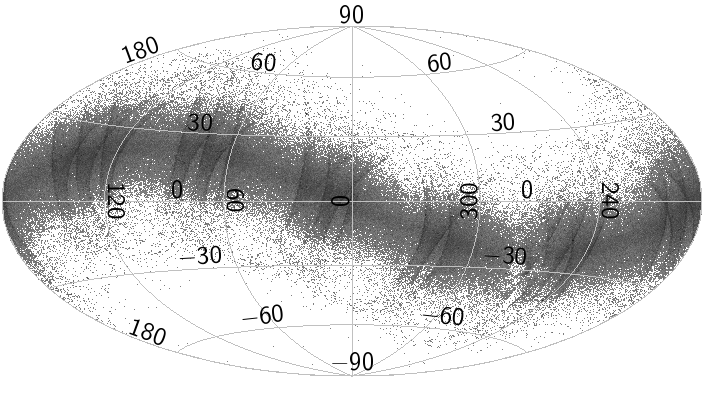14.8.1 The data sample
The data sample consists of objects, of which are known numbered objects. We focused our validation on those objects. All the categories of known asteroids are included: Near-Earth asteroids (NEAs), Main Belt asteroids (MBAs) and some Jupiter Trojans, Centaurs and distant objects.
There are some difference with respect to Gaia DR2 on how the data are available in the tables that we recommend to take into consideration when trying to perform a fit or in general use the data.
-
•
The relativistic light bending correction is not applied to the coordinates in Gaia DR3, whereas in Gaia DR2 a correction was applied assuming that the source was at infinite distance. As a result, we correct the observations, namely fields ra and dec with an independent algorithm that remove the effect.
-
•
Random and systematic uncertainties in Right Ascension (RA, ) are given with the factor , where or DEC is the Declination of the object.
-
•
Gaia positions and velocities are geocentric and not barycentric, as they were in Gaia DR2.
-
•
We use a quadratic sum of the two covariance matrices (systematic and random) for all the cases: when the objects are faint ( mag), the random matrix is larger than the systematic. The opposite happens for bright objects.

Figure 14.104 shows the distribution of all the observations of known objects in Gaia DR3, in the equatorial reference frame. The darker spots are symptoms of more dense zone of observation. Density patterns related to Gaia scanning law are present, but also less dense zone corresponds to the presence of highest stellar density region (see also (Tanga et al. 2023)).